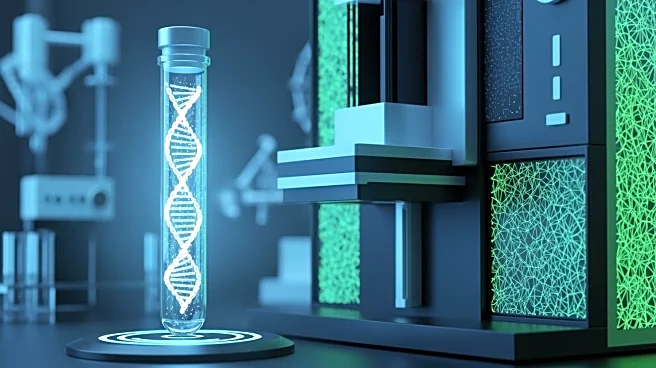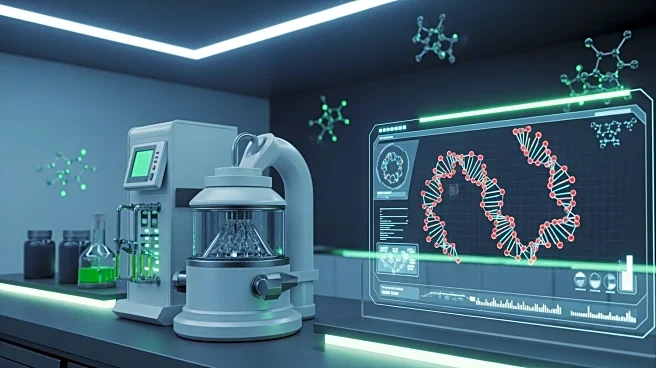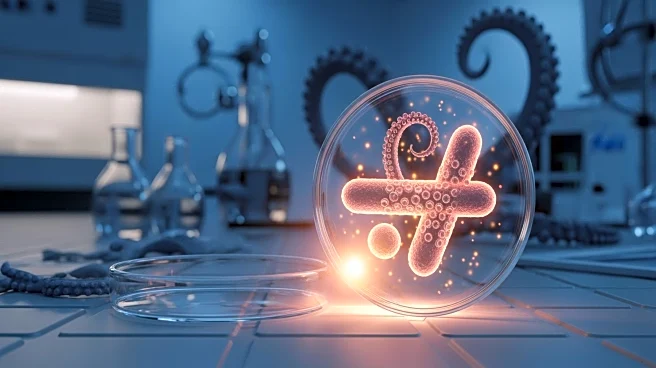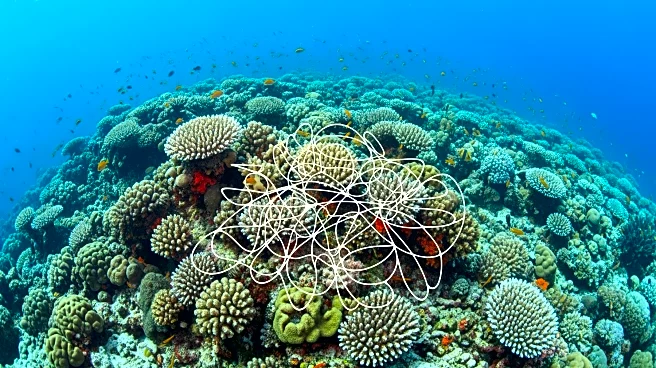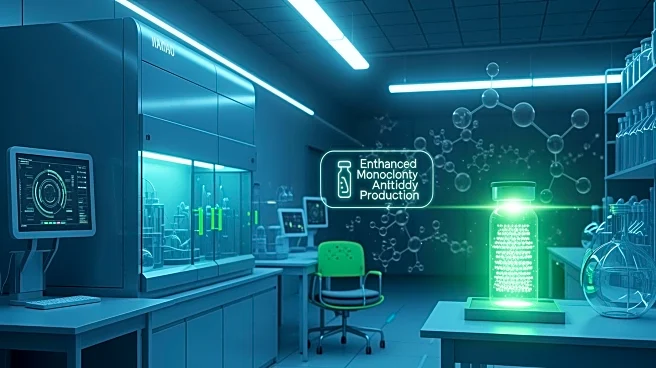What's Happening?
Researchers at UC San Diego have successfully bioengineered bacteria to produce xanthommatin, a pigment responsible for the camouflage abilities of octopuses and other cephalopods. This breakthrough allows
for the mass production of xanthommatin, which was previously difficult to obtain from natural sources or synthesize in laboratories. The team employed a method called 'growth-coupled biosynthesis,' which incentivizes bacteria to produce the pigment by linking their survival to its production. This innovative approach resulted in yields up to 1,000 times greater than previous methods. The study, published in Nature Biotechnology, highlights the potential for microbial manufacturing to produce other valuable compounds, offering significant advancements in industrial practices.
Why It's Important?
The ability to mass-produce xanthommatin could revolutionize the study of cephalopod camouflage, providing insights into natural phenomena and aiding in the development of technologies that mimic these abilities. This advancement in microbial manufacturing also suggests broader applications, potentially transforming industries reliant on chemical production. By demonstrating the feasibility of using bacteria to produce complex compounds efficiently, the research opens doors to sustainable manufacturing processes, reducing reliance on traditional methods that may be less environmentally friendly. Stakeholders in biotechnology and manufacturing stand to benefit from these innovations, which could lead to more cost-effective and eco-friendly production techniques.
What's Next?
The success of this bioengineering approach may prompt further research into microbial production of other complex compounds, potentially leading to breakthroughs in various fields such as pharmaceuticals, materials science, and environmental technology. As the technique is refined, it could attract interest from industries looking to adopt sustainable practices. Researchers may explore collaborations with engineers and chemists to optimize production processes and expand the range of compounds that can be synthesized using similar methods. The implications for biomanufacturing are significant, suggesting a future where biology plays a central role in producing valuable materials.
Beyond the Headlines
This development raises ethical and environmental considerations regarding the use of genetically modified organisms in manufacturing. While the benefits are clear, there may be concerns about the ecological impact and safety of releasing bioengineered bacteria into natural environments. Additionally, the ability to mimic natural camouflage could have applications in military technology, prompting discussions about the ethical use of such advancements. Long-term, this research could influence cultural perceptions of biotechnology, as society grapples with the implications of harnessing nature's capabilities for human use.


